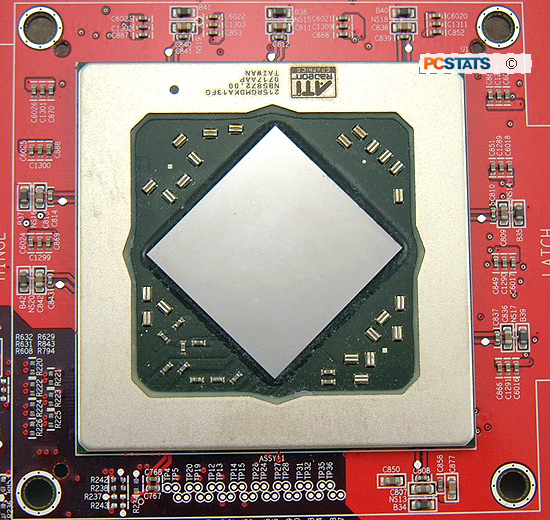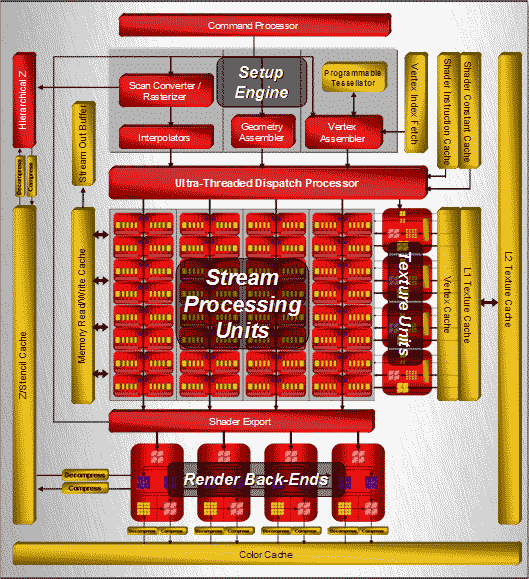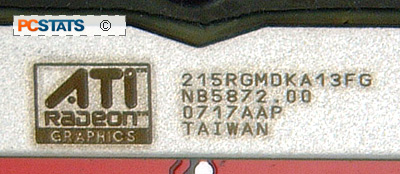The ATI/AMD R600 graphics processing core is built on
TSMC's 80nm manufacturing process, and contains a fantastic 720 million
transistors! To put that in scale, the ATI R600 GPU has 17468 times the number of transistors in the first Eniac computer from 1950s, and 29,000 times the transistors in the very first 8086 processor. Not impressed? Consider this, the Intel Core 2 Quad processor has just 582 million transistors!
The ATI R600 core has a default clock speed of 743 MHz.
The silicon core of the AMD R600 is 20.5 x 21mm, the
substrate 45 x 45mm. Everything to do with the R600 is big. While the other
Radeon HD 2x00 series are rather energy efficient, AMD states that the R600 can
draw up to 215W of power! The high power requirements exceed what a PCI Express slot can supply, so there is an eight pin PCI Express and six pin PCI Express power connector on the videocard. Both must be connected to power the videocard up.
A small shim around the exposed silicon core protects from damage, but if you're rigging up a custom cooling solution the shim may not be able to do its job properly... so step carefully.

Surrounding the large AMD R600 VPU is 512MB of Samsung GDDR4 memory, and there is another 512MB on the back of the videocard. The memory (K4U52324QE-BC09) is rated to operate at 1 GHz. Note the memory on this 1GB HD 2900XT model runs 100 MHz slower than on the 512MB version.
Microsoft DirectX 10 calls unified shaders (vertex, pixel and geometry) and the AMD R600 looks very much like nVIDIA's G80 GPU. The ATI R600 uses 320 Stream Processors (SP for short), where as nVIDIA's GeForce 8800GTX uses 128 SP. Of course ATI/AMD's version of the Stream Processor is a bit different, so directly comparing the SPs between each architecture is not possible. The R600 breaks down the 320 SP into four groups, and each group is then connected to its own texture unit.

The Stream Processors that ATI/AMD use do not all run special function operations, only every one in five is capable of that. For example, every five stream processors can run integer multiply functions, the others complete simple operations. When you break it down, the R600 can only handle 64 threads (320 / 5) at any given time compared to nVIDIA's 128.

While that sounds like a disadvantage for ATI/AMD, it all boils down to how software developers program the video game. AMD's parallel setup lends itself well to developers who want to put on a complex show, as the R600 can handle 5 operations per thread (4 simple, 1 complex) at a given time. The nVidia architecture can only do one thread per SP.
Of course, getting developers to write for parallelism is worse than pulling teeth, so realistically the difference between ATI/AMD and nVIDIA's architecture is purely academic. They both work in different ways, as to which is "better" will be determined by the game developers. We're going to leave things at that, the R600's core technology has been covered to death already online and we want to get onto more concrete items like power draw, overclocking and gaming benchmarks.
Up next, power consumption measurements with the Diamond Viper Radeon HD 2900 XT 1GB videocard.
